Spotlight on Michael Short
Feb 11, 2015
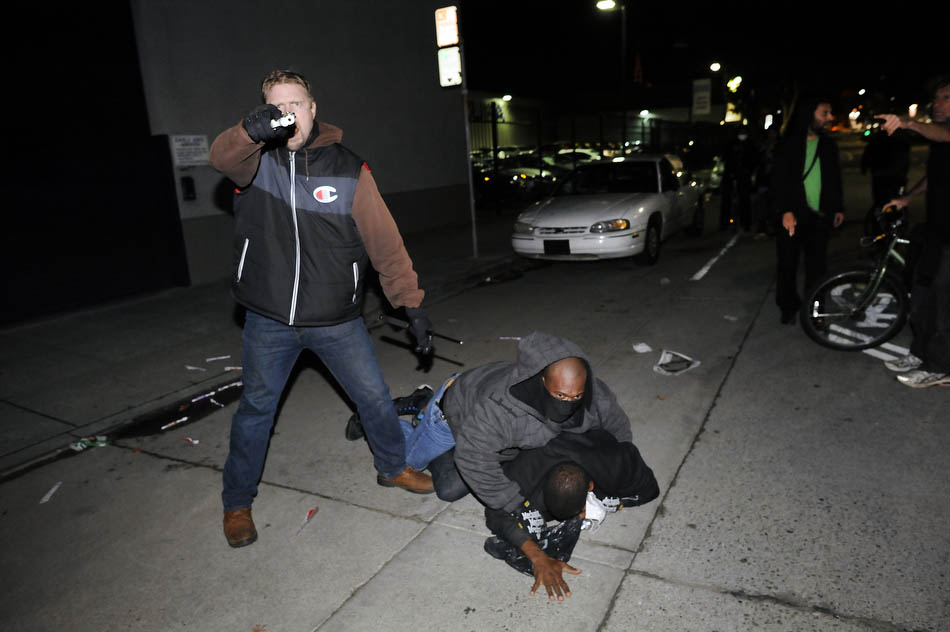
TID:
This is a very intense picture and one that went viral, can you please tell us a little of the backstory?
MICHAEL:
Thanks for having me, I'm very honored to be included on this wonderful site!
Protests have been going strong here in the Bay Area, particularly in Oakland and Berkeley, in response to the non-indictment verdicts for the officers involved in the deaths of Mike Brown in Ferguson and Eric Garner in New York. Both were unarmed black men killed by white police officers in separate events that have stirred a national debate over police tactics in dealing with the black community and also spawned the Back Lives Matter movement. There were large marches here on the first few nights following the more recent Eric Garner decision that seemed to have caught the police by surprise, both by their size and their tenacity. Protesters were able on to gain access to local freeways and block traffic on multiple nights causing big backups. Fires were set in trash cans and dumpsters and there was a good amount of property damage to corporate stores and banks in Oakland and Berkeley.
These actions brought about a strong response from the police during subsequent marches where a heavy amount of batons, tear gas and non-lethal ammunition were used against march participants. Local photographers were also feeling heat form police as well; freelancer Sam Wolson received a concussion from being hit in the head with a baton and a few nights later freelancer Tim Hussin had a lens broken by a baton as well. Stephen Lam, a Reuters freelancer, was pepper sprayed by police while trying to cover one of the freeway takeovers and as he was trying to get his eyes washed out one of his cameras was stolen. So it's been a pretty tense situation for all involved!
I'd been covering some of these marches, off and on for the last few weeks as a freelancer for the San Francisco Chronicle but somehow I'd managed to miss all the crazy nights and have stayed relatively safe. This image was made during a smaller march on December 10th that originated in Berkeley but ended up about 5 miles away in downtown Oakland.
TID:
How did you begin the shoot and what were you looking for initially?
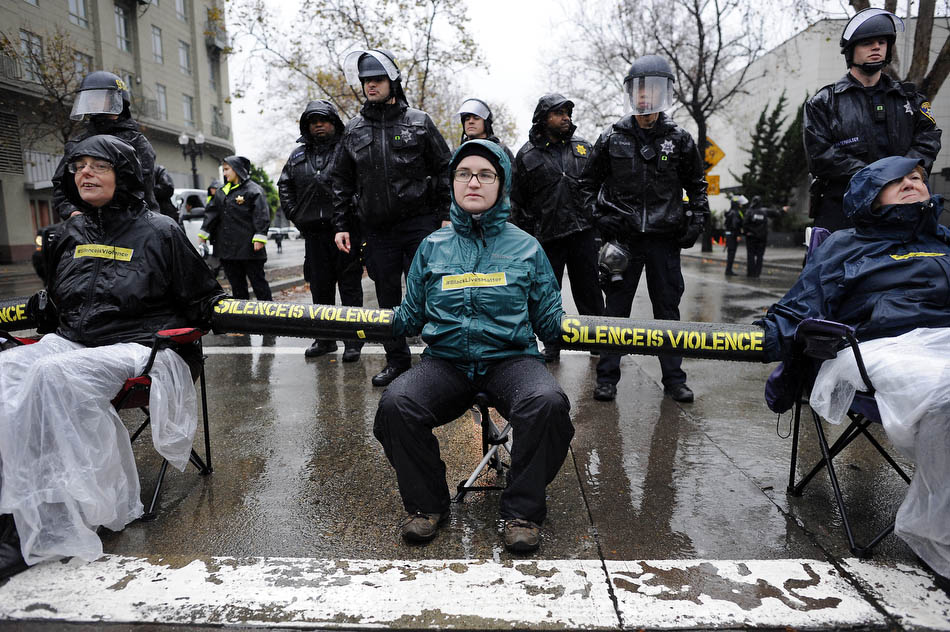
MICHAEL:
This night I was sent to cover a Berkeley Police Review Commission meeting where we thought there would be a large turnout of protesters and community members venting their frustrations over Berkeley PD's handling of some of the recent marches. That ended up being a dud. There were only about 10 people in attendance and no one there representing the police department, so I left and caught up with this particular march of about 150 people as they worked their way through downtown Berkeley. I had a 9:00pm deadline for the print edition of the paper so I had to make some images and get them in quick then get back out and cover.
I was just looking for something compelling that told story of the march; people with signs shouting and chanting, maybe blocking traffic, interactions with bystanders, interactions with police and the police presence. It can be hard to get something fresh and not end up taking the same photos when doing this kind of coverage, especially when the marches are taking place in the same areas night after night.
How did you prepare for this shoot/moment?
MICHAEL:
Well for the moment itself there wasn't really any preparation, it was just a crazy thing happened out of nowhere. But as far as covering protests I think I just try to prepare myself to be around a lot of human energy, a lot of heightened emotions. They're called protests for a reason and there's usually a strong current of anger, outrage and passion running them so you have to be ready for that. I also think about trying to stay safe and to be alert to my surroundings and the people around me.
TID:
What challenges did you encounter while working to make this image?
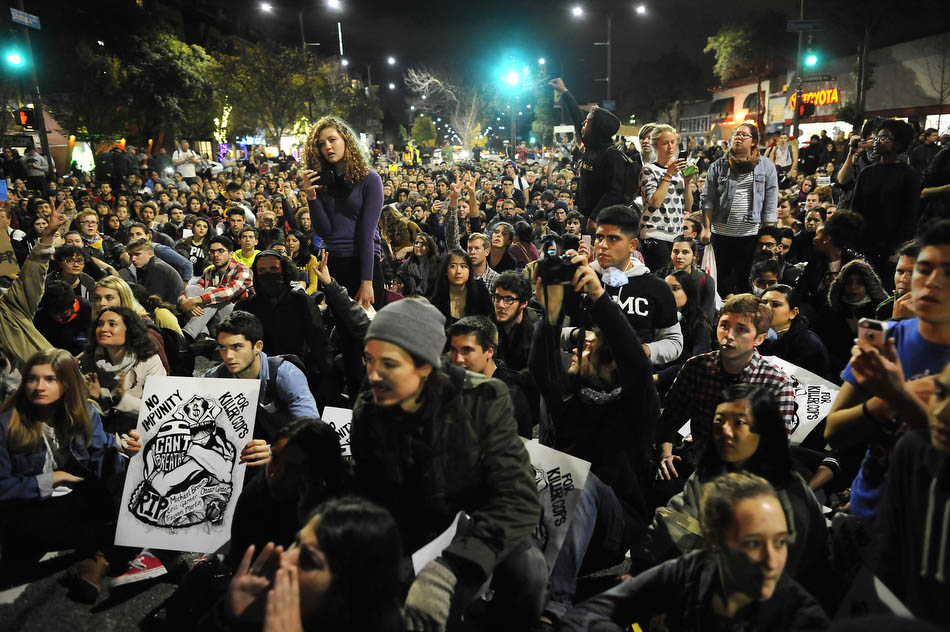
MICHAEL:
So before this scene unfolded the march had been pretty mellow. I had to file images for a 9:30pm deadline so after shooting for a little bit I pealed off to transmit and I didn't catch back up with the march until they were down into Oakland. Once they reached Frank Ogawa Plaza, which has been a main hub for most of the Oakland protests and also where the Occupy Oakland encampment had been, things started to get a bit sketchy. A few windows were broken at a bank and then a phone store on Broadway. The march then turned down 9th St. where a Wells Fargo ATM machine was smashed and then T-mobile store was also smashed and looted.
As I tried to take pictures of the some of the smashing and looting I was surrounded by 4-5 people from the crowd that were yelling at me not to take photos, putting their hands in front of my lens and threatening me. I tried to reason with them and stand my ground a little bit but then one of them grabbed one of my cameras and tried to remove the memory card which he thought had incriminating photos on it. I was able to wrestle the camera back from him before he got the card out, so then, under the pressure of their threats, I backed down and pretty much had to agree with them that I wouldn't take any photos of the vandalism. They shoved me away and that was that.
TID:
How did you handle and overcome these problems? (Problems are not unique,
but what is unique is a photographer's ability to problem solve)
MICHAEL:
It sucked, I was pissed off that I was, essentially, being censored but I just had to suck it up and accept it. Take some deep breaths and try to let it go. Another freelance photographer, Noah Berger, was also there shooting for Reuters and he ran into the same situation as me where he was told not to photograph any of the looting and vandalism. We got together right after this happened and both came to the conclusion that we probably wouldn't be taking pictures for the rest of the march and that we would just walk along with them and watch each others backs. We let our selves drift towards the back of the march so that most of the people were in front of us and we could keep an eye on them and we just kept walking. At this point, I called into my editor and explained the situation, he said I should leave if I felt it was too sketchy and that a Chronicle staff photographer, was near by with a car and could pick both Noah and I up. We mulled it over and ultimately decided to stay and ride it out in case anything happened.
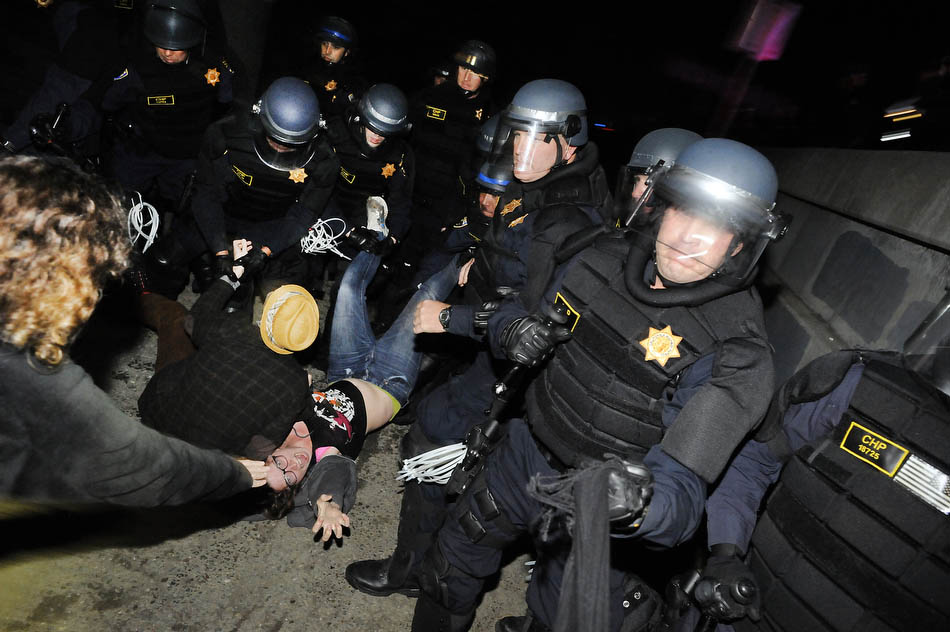
TID:
Now, onto the moment. Can you talk about the moments leading up to the picture and also the actual moment.
MICHAEL:
Yes, so at this point the march had dwindled down to around 50-60 people and we were being followed closely by a good amount police in cars and vans a hundred yards or so behind us. There was suddenly a commotion in the crowd up ahead and these two guys were being singled out and the crowd was starting to turn on them. Turns out they were undercover officers that had made their way into the march after the vandalism had started a few blocks back in order to more closely monitor the situation. Somehow they had been found out and the protesters were screaming and cursing at them and telling them to get out of there. They were starting to back away from the crowd when someone grabbed the black officer's hat off his head and tossed it around a bit before he could get it back. As he was picking his hat up someone from the crowd ran up behind him a punched him in the back of the head, briefly knocking him to the ground.
This officer jumped up and tackled the guy that had hit him and started wrestling with him trying to subdue him. The crowd became incensed and started surging towards the officers, this is when taller officer who was standing next to his partner on the ground, drew his gun and started waving it back and forth at the crowd telling everyone to get back. As he was pointing the gun he also radioed for assistance. In a few seconds officers that had been following the march rushed in and encircled the two undercover officers and the guy they were detaining while pushing everyone else back.
From a technical stand point it was really dark where we were and as the moment was unfolding I was struggling to get my flash out of my jacket pocket and onto my camera. I'm not a big flash shooter, so I had been shooting mostly available light with my 2 Nikon D700 bodies, one with a 24mm and the other with a 50mm. I love that 24mm f1.4G lens! It's great for low light shooting because it's sharp wide open but it's also notoriously slow to auto focus and as a result the first five or six frames I shot were well out of focus until the lens caught up. I just mashed on the AF button and kept shooting. There really wasn't any time to think about changing angles or anything like that so I just tried to get what was right in front of me, more of a "right place at the right time" sort of thing.

TID:
What surprised you about the moment?
MICHAEL:
Obviously having a gun waved around in front of me is pretty surprising, but the whole thing unfolded pretty quickly, and I wasn't really able to process what was happening at the time. I have to say I was more surprised that someone, knowing that these two guys were potentially police officers and were being outed by the crowd as such, ran up and punched one of them. Totally didn't see that coming! I just thought that was crazy! The march was essentially over after that. The remaining protesters, Noah, myself and a few other media people were all pushed back about a block away and everyone eventually dispersed from there.
I will also say that I think this image is more sinister than the situation itself, the officer with the gun was not targeting me particularly, he was pointing it at everyone, trying to keep them back, I just happened to catch a frame as he panned over to me. It comes across a bit as him targeting me or the media specifically and that wasn't the case.
TID:
What have you learned about yourself in the process of making images like this?
MICHAEL:
That having a gun pointed at me and others didn't freak me out as much as it probably should have, but as I said before it all happened so fast that there wasn't much time to stop and think. I know I have a bit of stupid stubbornness in me that makes me stay and try to make images, which can be good or bad depending on the situation, but for the most part I think I've just been lucky so far.
TID:
What have you learned about others?
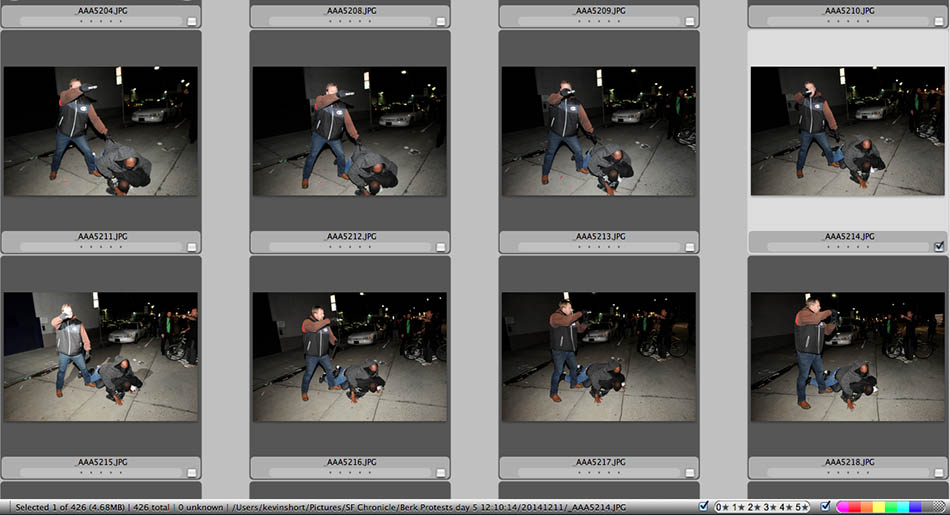
MICHAEL:
I've been in awe of the staying power these protests have had, due in a large part to the dedication of people organizing but also the sheer numbers of people that come out to voice their frustrations night after night. It's been impressive.
This experience has also reaffirmed the idea that people can be completely unpredictable and that a situation can change in a heart beat, for better or worse.
TID:
What impact did this experience have emotionally on you? Can you also talk about the aftermath of the publication of this image?
MICHAEL:
My father had called me the next day and the first thing he said, even before saying hello, was "Michael you gotta be careful out there." That made it sink in a bit more, made me realize that that was a dangerous situation, maybe more so than I was letting myself believe.
As far as the publication, both my image and Noah's blew up across the internet and it was great to see them get a lot of attention but it was also exhausting! I was hounded by local news outlets and did a ton of interviews in a short span of time and it really gave me a taste of the other side of the media machine which can be relentless.
There was a lot of internet outrage over both my and Noah's images and they were used quite a bit to paint the picture of an overly aggressive police response to protesters and also to draw attention to police brutality on a whole as part of the message of the Black Lives Matter movement. While I may agree with some of those claims I believe that that's taking this image and situation out of context. I believe that the officer was within his rights to pull out his gun as a means of protecting himself and his partner from the angry crowd of people that were coming at them. He had just seen his partner punched and knocked to the ground a moment before and was probably scared as hell so I don't have a problem with him doing what he did. He was later quoted as saying that he didn't know if he and his partner were going to make it out alive. That seems like a bit of stretch to me but it was a definitely a scary situation and I think it warranted his response.
TID:
In conclusion, what advice do you have for photographers?
MICHAEL:
If I had packed it in and left after I was threatened for shooting the vandalism earlier on, I never would have been there to make this image. So maybe there's some advice in there about sticking to your principles, particularly as a photojournalist, and not being pushed away from covering a story or issue that yo feel is important. It's definitely situational and I don't want to advocate staying in dangerous environments past your due but sometimes you have to push back a bit to get what you want or what you need to tell the story.
I'll leave with this little piece of irony: After everyone was pushed back by the police following the gun incident, some of the same guys that had threatened Noah and I earlier, were now thanking us for being there and getting pictures of the officer pointing his gun at them!

:::BIO:::
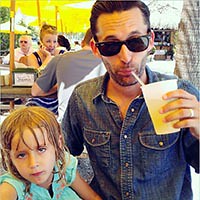
Michael Short is a self taught photographer based in Oakland, California. After recently completing an 11 month long contract as a staff photographer with the San Francisco Chronicle he is now back to being a freelancer and works with a variety of editorial clients, though the bulk of his work is shooting news and features for the Chronicle.
Originally from Florida, and now back in California after a stint in New York, Michael lives with his wife Malina and daughters Bailey and Adeline. When not shooting he enjoys spending time with his family, eating burritos, pretending he still skateboards, surfing when the waves aren't too big and riding his bike when he needs to go to the store.
You can see recent work of Michael's on his blog: www.mshortphotography.wordpress.com
And also on his website: www.mshortphotography.com
Instagram @michaelsaltyshorts